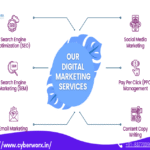Follow these links as wel
Behind every headline is a human being—working under deadline pressure, inbox chaos, editorial scrutiny, and the nonstop chase for what’s newsworthy. And yet, too many PR pitches treat journalists like vending machines: insert story, expect coverage.
That’s not how it works—and never has.
At its best, public relations is not about pitching; it’s about relationships. Not one-off coverage, but ongoing conversations. If you want to stand out in a reporter’s inbox—and stay top of mind long after—you have to move from transactional to relational.
Here’s how to build genuine, long-term relationships with journalists that lead to better stories, stronger coverage, and mutual trust.
✅ Step 1: Do Your Homework—Deeply
Before you ever hit send, take time to truly understand a journalist’s world:
-
What do they actually cover? Go beyond the beat listed in their Twitter bio or Muck Rack profile. Read their last 5–10 stories. What angles do they like? Who do they quote? What do they ignore?
-
What’s their tone? Are they analytical? Sarcastic? Narrative-driven? Knowing their voice will help you craft a pitch that fits their style.
-
Who’s their audience? Think about who they write for—not just the outlet, but the people reading. Are they writing for startup founders? Fortune 500 CMOs? Tech-savvy consumers?
When you pitch someone without knowing their work, it shows. But when you reference a specific article or connect your idea to their actual interests, it stands out—because it’s rare.
✅ Step 2: Treat Journalists Like People, Not Gatekeepers
Reporters are not obstacles between you and press. They’re professionals doing complex, often thankless work. And like anyone else, they appreciate kindness, respect, and relevance.
Ways to humanize your approach:
-
Follow them on social (but don’t stalk). Like or comment on their work when it’s genuine.
-
Engage without an ask. A quick compliment or thoughtful reply to a story shows you care about their work—not just what they can do for you.
-
Respect their time. Keep your emails short, clear, and useful. If they don’t reply, don’t nag. Follow up once, then move on.
Relationships don’t start with a pitch. They start with being a decent human.
If you’re searching for a reliable PR company in Delhi, we have the expertise you need. Reach out to us at Twenty7 Inc!
✅ Step 3: Deliver Value Before You Ask for Anything
Want to really get on a reporter’s radar? Offer value with no strings attached.
Some ways to do that:
-
Share relevant research, data, or insights you’ve come across (even if it’s not from your company).
-
Offer background or context on a trend you know they’re following.
-
Introduce them to someone credible—like a founder, customer, or expert—who might be a fit for their beat.
Think of this as “relationship equity.” Every time you help without expecting coverage, you’re building trust—and trust pays off.
✅ Step 4: Make Their Job Easier
Reporters are under pressure to file fast, file often, and file accurately. If you can make their work easier, you immediately become more valuable.
Here’s how:
-
Be responsive. If a journalist asks for a quote or fact, reply ASAP—even if it’s just to say you’re working on it.
-
Provide clean, complete information. When you pitch, include:
-
A clear headline or story angle
-
A quote or source availability
-
Background data or links
-
Contact info + timing
-
-
Anticipate their needs. Offer assets they might want: high-res headshots, customer examples, third-party stats, access to internal experts.
When you consistently deliver clean, usable material, journalists will remember you—and return when they need sources.
✅ Step 5: Be Transparent—Especially When Things Go Sideways
Building a strong relationship means showing up when things aren’t perfect.
If there’s an embargo mix-up, a source pulls out, or a product update gets delayed, own it. Communicate clearly. Offer solutions.
Nothing breaks trust like spinning, dodging, or ghosting under pressure. But being honest, even when it’s uncomfortable, builds long-term credibility.
Journalists know things fall apart. What they value is how you handle it.
✅ Step 6: Don’t Disappear After the Coverage
The biggest relationship mistake in PR? Treating a media win like a mic drop.
When a story runs, don’t vanish. That’s the moment to:
-
Send a thank-you note that’s specific and thoughtful.
-
Share the piece widely (and tag the reporter so they get visibility).
-
Keep them in the loop—on the impact of the piece, related developments, or future opportunities.
Good relationships continue after the story is published. And often, that’s what leads to the next one.
✅ Step 7: Play the Long Game
This is the biggest mindset shift: don’t just pitch—partner.
Think of media relationships the way you would client or investor relationships:
-
Show up consistently
-
Offer value without always asking for something
-
Be helpful, honest, and professional
-
Stay in touch even when you don’t have a big announcement
The more you support journalists in telling great stories—yours or not—the more you become a trusted source they turn to again and again.
It’s not about a single hit. It’s about being part of the conversation, over time.
Bonus: Things NOT to Do
Even seasoned pros make missteps that can erode relationships. Avoid these common pitfalls:
❌ Mass pitching without personalization
❌ Following up too aggressively or too often
❌ Pitching off-topic stories “just in case”
❌ Getting defensive or pushy about coverage
❌ Asking to preview or approve a story before it runs
❌ Going silent after a journalist helps you out
Respect goes a long way. So does humility.
If you’re searching for a reputable PR company in Hyderabad, we’re here to assist! Reach out to us at Twenty7 Inc.
Final Thought: The Best Press Comes From the Best Relationships
Behind every meaningful media moment is a conversation, a connection, a relationship. Reporters aren’t waiting to be “convinced”—they’re waiting to be collaborated with.
If you take the time to understand, support, and work alongside them—not just when you need a favor, but always—you’ll earn more than just coverage. You’ll earn trust.
And in PR, trust is the only currency that compounds over time.
- One of the biggest benefits of PR is its impact on search engine optimization (SEO).
- Discover how PR helps build long-term brand trust and recognition through consistent messaging, third-party validation, thought leadership, and crisis management. Learn why PR is essential for fosteri
- pragency
Related posts:
 Best Website Designer and Web Design Solutions with Cyberworx Technologies
Best Website Designer and Web Design Solutions with Cyberworx Technologies
 Plumbing SEO Agency Hacks: Easy Ways to Increase Your Business Earnings
Plumbing SEO Agency Hacks: Easy Ways to Increase Your Business Earnings
 Enjoy Ultra 9000 Box of 10 – Power, Flavour, and Convenience Combined
Enjoy Ultra 9000 Box of 10 – Power, Flavour, and Convenience Combined
 Crystal Pro Max + 10000 Box of 10: Long-Lasting Flavour from a Trusted Vape Store in UK
Crystal Pro Max + 10000 Box of 10: Long-Lasting Flavour from a Trusted Vape Store in UK
 Outrank Competitors with Help from a Trusted Denver SEO Agency
Outrank Competitors with Help from a Trusted Denver SEO Agency
 Marathi Birthday Invitation Card Maker Free – Design Stunning Invites Online
Marathi Birthday Invitation Card Maker Free – Design Stunning Invites Online
 Integrative Neuro Therapy Certification – Certified Training in Functional & Holistic Approaches
Integrative Neuro Therapy Certification – Certified Training in Functional & Holistic Approaches
 Everything You Need to Know About Lifeguard Certification Exams
Everything You Need to Know About Lifeguard Certification Exams







